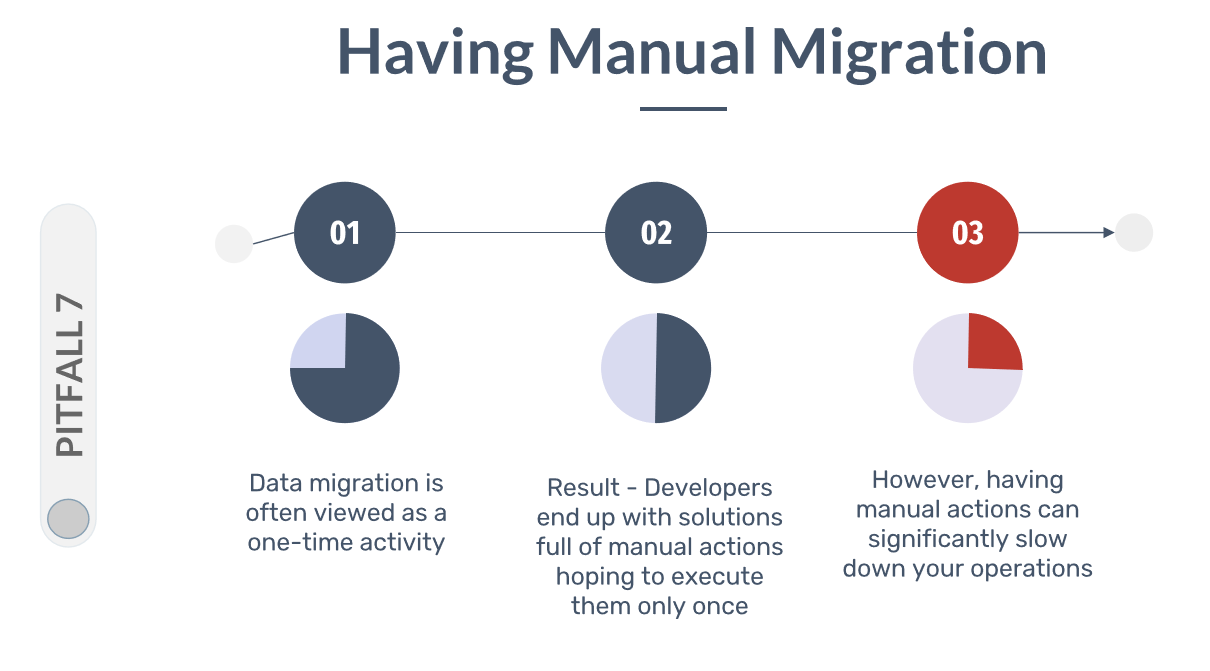As you may have read in our previous blogs, data migration is often viewed as a one-time activity but in reality, it’s not. It is not a one-click activity. Therefore, it’s not the best thing for you to do it manually.
 The truth about migration is that it’s divided into phases, and the process is not as easy as it sounds. So, what should you do instead?
The truth about migration is that it’s divided into phases, and the process is not as easy as it sounds. So, what should you do instead?
Automate those processes. You may have to run data migration first on the live staging environment and that too in two phases. Hence, it is going to be a repetitive process. Since it is of that nature, it is advisable to automate it, or else it’ll turn out to be a tedious task for you to get done correctly.
Choose Automated Migration

Migration is split into multiple phases. At least, there are three stages in which migration runs. First is a dry run that you should conduct during a data migration process. Maybe on a partial Sandbox, then a full data validation that you can do on a full Sandbox. After doing the sandbox refresh before you proceed with a real production upload.
Since there are at least three phases in data migration, it is important to automate the processes to ensure that the same things can be repeated for all three phases or three waves. Otherwise, you might end up writing different scripts for different migrations, and running them manually will only increase your efforts by three to four times.
Similarly, data quality is also an iterative process. So make sure that you’ve got some sort of data cleansing dashboards that are present and can be monitored regularly through your automation migration to see how much data is cleaned and whether it is good to go or not. You can choose to use any automation migration tools out of the many available in the market. This step can automate your processes and automatically automate your data migration as well. The migration process takes time and it’s done in multiple phases, so automate every wave of it to save your valuable time.
There are many more pitfalls that you can avoid but based on our experience these were the seven that should be avoided at every stage. Hope you learned a lot about data migration in this blog series. If you have any questions feel free to write to us at wecare@ablypro.com, we’ll be glad to answer them all.





